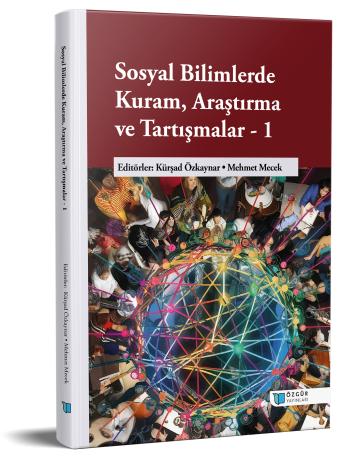
Artificial Intelligence Applications in PreK-12 Education: The Ethical Perspective
Chapter from the book:
Özkaynar,
K.
&
Mecek,
M.
(eds.)
2025.
Theory, Research and Debates in Social Sciences - 1.
Synopsis
Arguably today, areas for which Artificial Intelligence (AI) applications are not used, are becoming almost extinct. AI applications have already been used in determining travel preferences, creating shopping lists, in supporting child raising, toward the creation and maintenance of autonomous vehicle systems. In fact, AI applications are frequently employed in educational trajectories as well. Here, the main objectives are to enable students to receive a more quality education and to better facilitate their learning processes. At the same time, these technologies provide teachers with a fair number of materials of novel sort along with other ‘intelligent applications’ to be utilized in instruction. That said, technology carries the potential to bear several disadvantages particularly when used outside of numerous determined purposes. In this direction, AI may negatively affect students via fostering cheating behavior, causing deprivation of creative thinking processes, and personal development. Today, with the help of an AI application entitled ChatGPT-4 developed by Open AI company, it is possible to write a paper, thesis, or summary on almost any subject. Writing codes, solving problems, and developing creative applications are amongst the operations this application can easily overcome. To this end, it would be fair to state that AI applications can cause harmful societal effects aside from the convenience they provide. This creates public concern, and national and international governmental institutions declared some restrictions and legal guidelines in this regard. Our country (Türkiye) currently has no law or a draft version of a law on how AI applications should be benefitted. Howbeit, some other countries have published AI ethical guidelines and policy documents. In light of all these, this study intends to discuss the ethical dimension(s) of using AI applications, and their reflections in particular at PreK-12 levels by scrutinizing the phenomenon through a literature review and through collecting data from student teachers taking a qualitative route. As a result of the research, it appears that establishing an ethical practice framework for AI applications is inescapable. Further, learners at PreK-12 levels need to be made knowledgeable about the ethical dimension(s) of the said applications with the emphasis that these applications act as more than being yet another time passing/recreation tools since they can assist in development to a greater extent but posing greater threats for those students.

